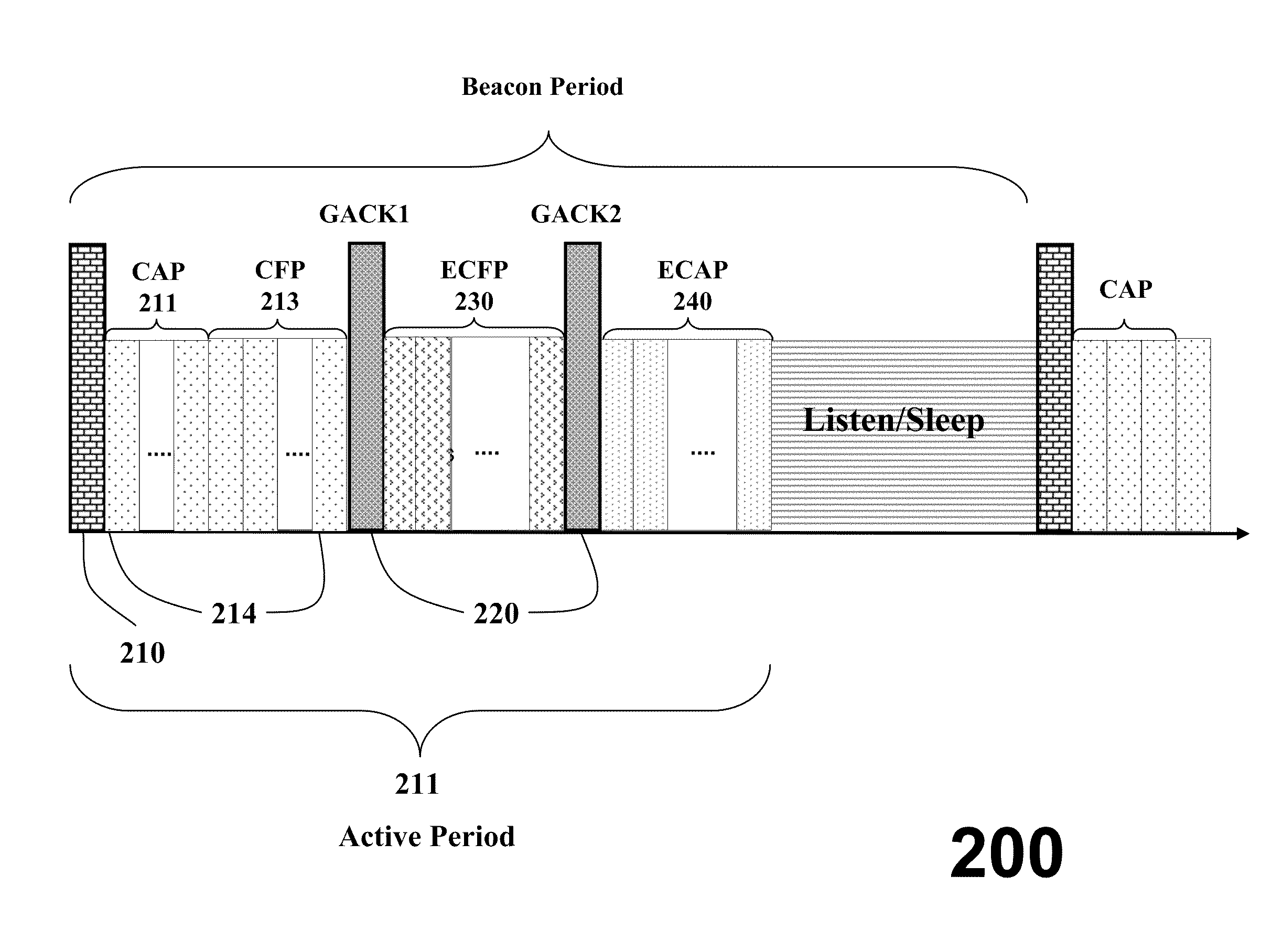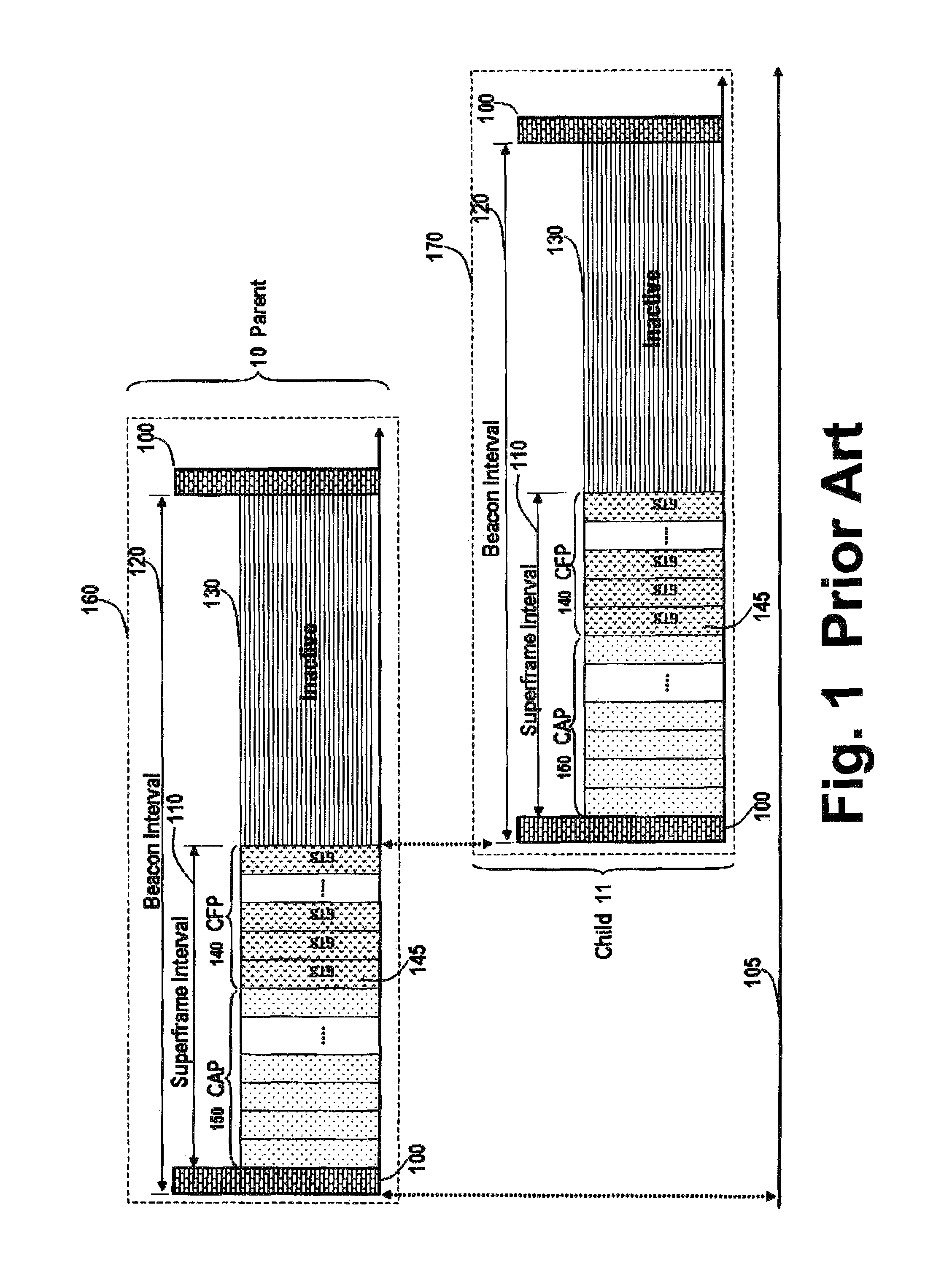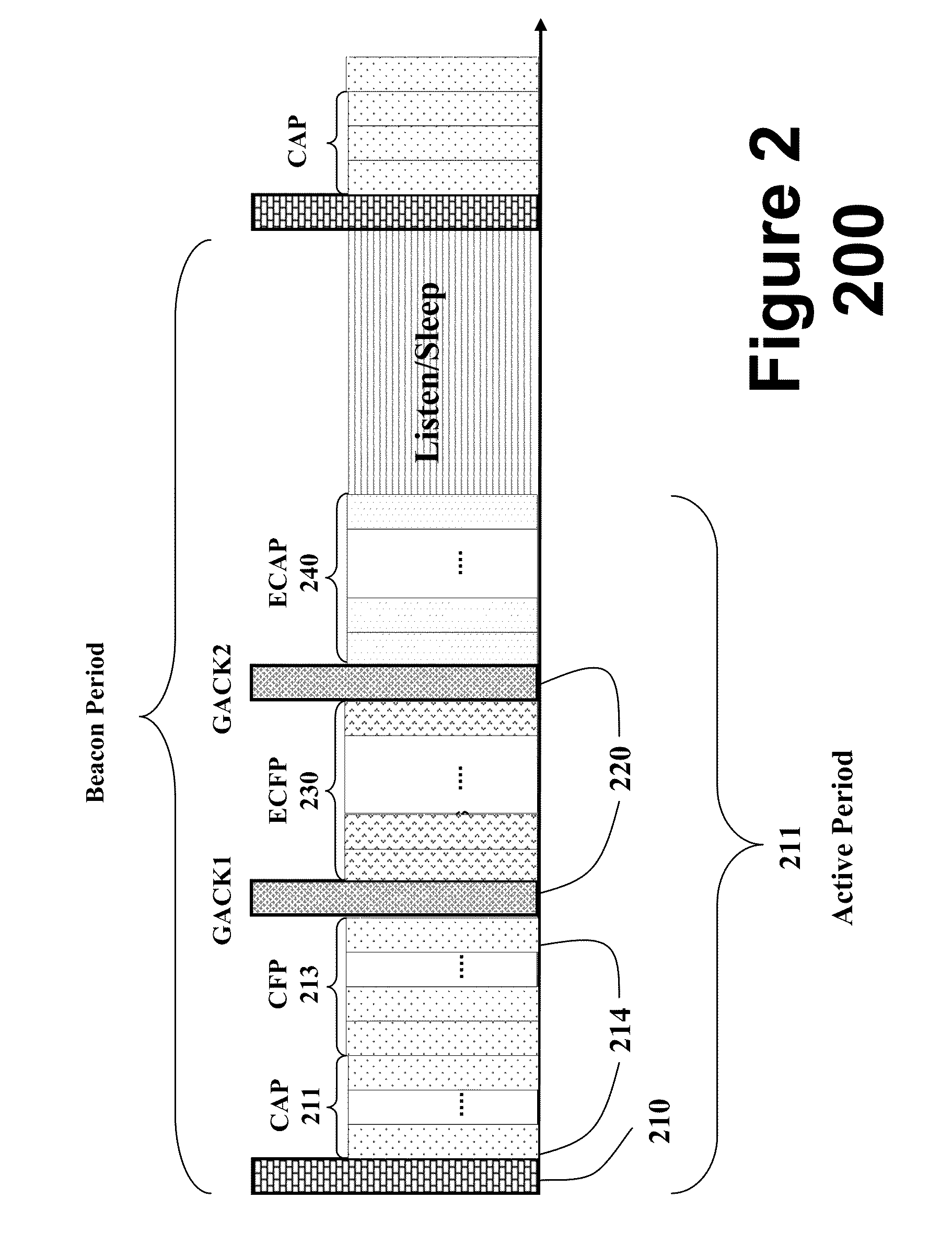Distributed beacon enabled wireless networks
a wireless communication network and beacon technology, applied in the field of wireless communication network beacons, can solve the problems of large expenses if not detected, complex networks, high cost, etc., and achieve the effect of improving channel efficiency, reducing the risk of data traffic, and improving reliability
- Summary
- Abstract
- Description
- Claims
- Application Information
AI Technical Summary
Benefits of technology
Problems solved by technology
Method used
Image
Examples
Embodiment Construction
[0033]The embodiments of our invention provide a protocol that operates in a distributed manner in a network of transceiver nodes, and offers an automatic resource management mechanism that is distributed in its nature, and scalable. The protocol uses period announcement cycles to specify a communication schedule for the nodes.
[0034]The network offers a very reliable communication services. It offers low latency by providing opportunities for retransmission of failed data frames in the same super frame. It offers a certain degree of determinism in the sense that data frame will be delivered in the same super frame. That is, the super frame duration defines maximum transmission delay for one hop transmission. The network is adaptive to burst traffic in the sense that the nodes having unusual data arrivals can request for additional bandwidth from a coordinator node. This bandwidth is dynamically allocated in the same super frame. The protocol does not require assistance from higher l...
PUM
 Login to View More
Login to View More Abstract
Description
Claims
Application Information
 Login to View More
Login to View More - R&D
- Intellectual Property
- Life Sciences
- Materials
- Tech Scout
- Unparalleled Data Quality
- Higher Quality Content
- 60% Fewer Hallucinations
Browse by: Latest US Patents, China's latest patents, Technical Efficacy Thesaurus, Application Domain, Technology Topic, Popular Technical Reports.
© 2025 PatSnap. All rights reserved.Legal|Privacy policy|Modern Slavery Act Transparency Statement|Sitemap|About US| Contact US: help@patsnap.com



